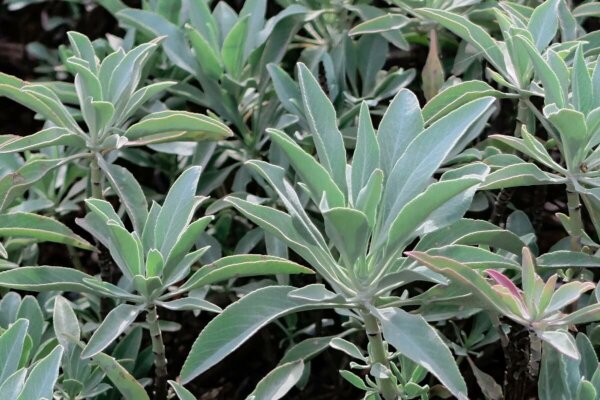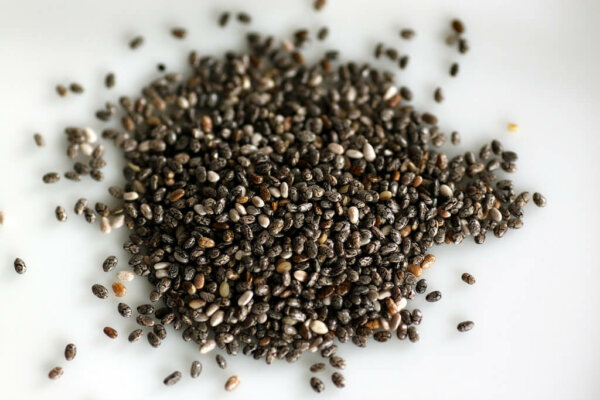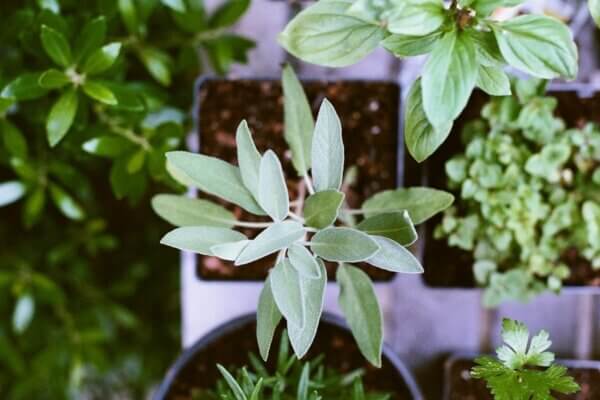Experienced homesteaders suggest that if you want to attract birds, bees, butterflies, and wildlife to your rural homestead, plant and grow sage. Sage is a favorite in homestead herb gardens because it is one of the easiest plants to grow.
A member of 200 genera and more than 3,200 species of the plant family Lamiaceae, sage thrives worldwide. Known family members include multiple varieties of mint, oregano, thyme, basil, catnip, lavender, and marjoram.
A Striking Landscape Accent Plant
Sage is characterized by its silvered greenish-grey leaves that form dense, spreading mounds: Sage is an excellent plant to naturalize in pastures, meadows and open fields. Here, it provides forage and habitat for wildlife, helps control erosion, and adds color and beauty to the landscape.

Sage grows best in a full-sun location but tolerates partial shade: growing in any soil.
From dwarf varieties that grow to a mature height of less than one foot, to ones that grow up to 10 feet in height, there is a seemingly endless selection of sage varieties to suit every landscape need.
Low-growing, edible sage is an excellent edging around the garden where it’s pungent scent helps ward off crop-damaging insects. To brighten a bare spot in your home décor, plant sage in pots or containers to add flowers, fragrance, and color to indoor and outdoor living spaces.
Taller varieties of the robust-growing woody herb provide an attractive backdrop to other garden greenery, rejuvenate barren land, and attract songbirds.
Sage Varieties
The leaves and tiny seeds of all varieties of sage are edible and store well when dried. Finely-ground sage seed is used as a culinary seasoning, to preserve meat, and when mixed with maize meal, is used to prepare cakes and biscuits. Historically, the hardy perennial plant was also utilized to craft ropes and baskets while the wood served as fuel.
Pitcher Sage
Pitcher Sage, also known as pitcher salvia, blue salvia, azure blue sage, hummingbird sage, or wild blue sage is found in open meadows, roadside ditches or other well-drained, undisturbed areas offering rocky, sandy soil. Drought-tolerant and disease-resistant, the hardy, perennial, herbaceous plant grows wild across the prairies and plains of North America.
Livestock and wildlife love pitcher sage, seeking it out in the spring for its high protein content. The long-lived, native perennial plant presents an abundance of dark blue flowers that attract bees, butterflies, and hummingbirds.
https://www.instagram.com/p/Beo0i2rjumT/?tagged=pitchersage
Attractive and tall, the delicate plant exhibits small, blue blooms in early July and a heavy profusion of blooms last well into autumn, offering brilliant color at a time when the majority of wildflowers have faded. Although pitcher sage, a warm-season plant, is not quite as fragrant as some other varieties of sage, the brilliant blue flowers are pleasantly pungent, lending a sweet “minty” scent to the morning air.
White Sage
An aromatic, herbaceous, sub-shrub, white sage, also known as bee sage, or sacred sage, exhibits fan-like wands of fragrant white to pale-purple flowers.
https://www.instagram.com/p/BfZo_WsBj0t/?tagged=whitesage
Delicate silver-green foliage forms dense 2-foot wide mounds. The tiny flowers appear on erect, white-colored branches that grow up to 5 feet tall.
Purple Sage
A low growing native perennial with lots of branches, purple sage, also known as desert sage or gray ball sage is a sub-shrub that grows to a modest, mature height of 2-3 feet. The drought-tolerant sage is typically broader than it is tall, forming dense, rounded clumps of thick silver-green foliage.
https://www.instagram.com/p/BfTc1JfAdW2/?tagged=purplesage
The woody sage features stout, ridge branches with brilliant blue-violet clusters of flowers borne above the silver clouds of foliage. A handsome plant that requires little care, purple sage is a useful landscape plant that attracts birds, bees, and butterflies to the homestead garden.
Use as an ornamental planting in flower beds and to edge walkways. Its subtle beauty enhances the landscape year around. By the way, purple sage honey is delicious.
Chia
High in protein and packed with essential nutrients, chia seeds, when roasted have an earthy, nut-like flavor. For centuries, chia seeds were a valuable food resource for Native American Indian tribes.
In fact, 600-year-old carbon dated seeds were found safely stored in pottery jars on one of the Channel Islands: a tiny atole located off the coast of Southern California. Massive beds of hardy chia plants still bloom in rural areas that were once the home of native people.
https://www.instagram.com/p/BTXoCOwhZTW/?tagged=chiasage
Seeds were harvested by gently bending bundles of chia stalks over gathering baskets and shaking or beating the prickly seed heads to release the tiny seeds. Baskets were used to fan away the chaff.
Another method of seed recovery involved placing seed bundles on a blanket and stomping or dancing on the stalks until seeds released. Although seeds are tiny, by this method, large volumes of seed could be quickly gathered.

Containing a mucilaginous substance, chia seeds expand to a gelatinous volume, up to 10 times in size. When consumed, chia seed provides a sense of fullness and satisfaction, making them a useful weight-management tool. Add chia seeds to soups, sauces, stews, and salads.
Chia seeds are an important food source for butterflies, pollinators, other insects, birds, and small mammals.
Cherry Sage
Cherry sage, also known as autumn sage (Salvia greggii) is a 2 to 3-foot sub-shrub that bears small fragrant flowers in a diverse array of soft shades of white, pink, red, purple and orange.
https://www.instagram.com/p/BYa0rKUAo6R/?tagged=cherrysage
The plant’s gray-green leaves of the mounding shrub are highly aromatic, emitting a sweet mint scent. Drought-tolerant, disease-resistant, and insect-free, cherry sage bears flowers from early spring through late autumn. Evergreen in warm winter areas, cherry sage flourishes from Texas deep into Mexico.
Big Sagebrush
The sage species known as “big sagebrush” thrives in America’s western rangelands, providing a valuable winter food staple for a wide range of wildlife including white-tailed deer, black-tailed deer, mule deer, pronghorn antelope, bighorn sheep, elk, and jackrabbits.
https://www.instagram.com/p/BXqWtnsla_f/?tagged=bigsagebrush
Nutrient-rich and high in protein, big sagebrush, also known as Wyoming sagebrush, mountain sage, big alpine sagebrush or big basin sage, has significant forage value for livestock and wildlife. Ranchers and farmers across Montana and Wyoming depend on sagebrush to provide winter grazing.
Tips For Growing Sage
Sage is one of the hardiest plants native to the Northern Hemisphere and will grow anywhere where the soil drains well and the sun is plentiful. Sage can be started from seeds, by layering, or transplants.
If you desire a broad assortment of different kinds of sage, it’s best to purchase starter plants from local nurseries or order online for a wider selection. Sage requires little watering once established and no fertilizer. Make sure to avoid over-watering.
https://www.instagram.com/p/BG7K-oYkmRc/?tagged=growingsage
Sage does best in a soil where nutrients and moisture are low, tenaciously surviving extended periods of extreme drought, ferocious winds, and temperature extremes. Supplemental water in the spring encourages a profusion of flowers. Container and potted sage plants grow well in a mixture of half sand and half perlite.
Other Uses For Sage
Throughout recorded history, sage has gained high praise for its impressive medicinal properties. Tinctures and teas made from the delicate leaves of the sage plant were used to stimulate a failing appetite, relieve flatulence, stomach pain, and diarrhea, eliminate bloating, and soothe heartburn.

Sage is also used to retard overproduction of perspiration, improve memory, and delay the progression of Alzheimer’s disease.
- Sage leaves, steeped in boiling water, drained, and applied as a poultice, is said to relieve lung congestion.
- Inhaling the smoke from burning sage clears sinus passages and calms the mind.
- Native American people chewed the leaves to ease stomach discomfort.
Sacred Sage
Smudging with sage is a century-old tradition of many Native American tribes. Today, smudging the home with a burning bundle of sage is part of some belief systems including Neo-pagan spirituality. While any variety of sage is acceptable for removing negative energies and bringing harmony to the home, white sage, synonymous with peace and purity is the preferred.
References:
- Plant Guide – White Sage, United States Department of Agriculture
- Plant Guide – Lyreleaf Sage, United States Department of Agriculture
- Plant Guide – Big Sagebrush, United States Department of Agriculture
- Plant Guide – Chai Sage, United States Department of Agriculture
- Plant Guide – Pitcher Sage, United States Department of Agriculture










































Leave a Reply